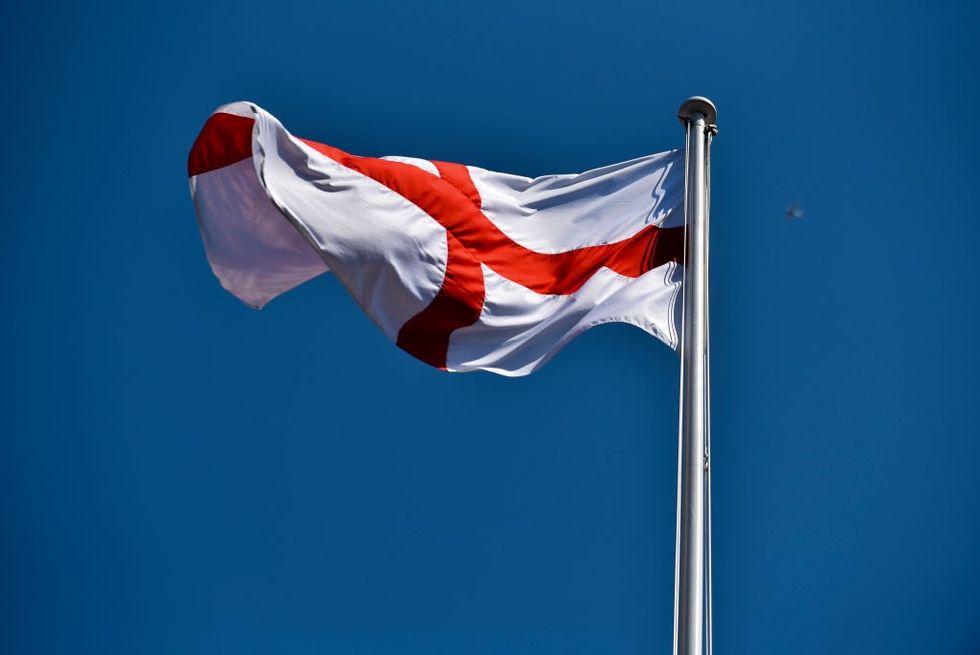'How did we come to have this great devotion to a particular Roman saint?' Jacob Rees-Mogg

Jacob Rees-Mogg shared the story behind St George's Day
Don't Miss
Most Read
You know, the great Shakespearean shout, Cry 'God for Harry, England, and Saint George. But why Saint George? How did we come to have this great devotion to a particular Roman saint?
Well, the reason is medieval devotion. In the medieval period, people had a personal relationship with their saints.
They felt that they were intervening in their daily life day by day as a regular occurrence.
And if they were let down by their saint if they prayed, they asked for the intercession of a saint, and the saint didn't oblige. They would get quite cross.

Jacob Rees-Mogg shared the story of Saint George
|GB News
So people had treasured relics of saints, and if their prayers weren't answered, there were reports of them throwing them on the floor and stamping on them because they were cross like a toddler with a saint who hadn't obliged.
Saint George becomes the patron of England because he's seen or was seen to have delivered. Some people believe that William the Conqueror had the banner of Saint George when he came over at the Battle of Hastings in 1066, but he was certainly thought to be present early in the Crusades.
At the Battle of Antioch in 1098 and in Jerusalem in 1099, Saint George was there urging on and indeed rescuing the English, or indeed the Norman forces.
The inspiration of the saints is crucially important, and the invocation carries on.
Even in the First World War, the troops thought at times, and this is 1914, Saint George was there helping them, aiding them, inspiring them, and boosting morale. But it wasn't always going to be Saint George. Saint George wasn't the first patron saint of England before him.
It was Saint Edmund the Martyr, a ninth-century East Anglian, a saint who was killed by the Vikings, and Saint Edward the Confessor, who competed for this important role, and it was King Edward III who decided that it would be Saint George because he established his chivalric order, the order of the Garter, which even to this day, to this year, makes announcements of new appointments on Saint George's Day, is still dedicated to Saint George.
 St George's Day celebrates the patron Saint of England | Getty
St George's Day celebrates the patron Saint of England | GettyThe King is still head of the Knights of the Garter, and Edward III set that up as his chivalric order. Edward IV, and set up his great chapel at Windsor to Saint George.
Interestingly, when the Protestants came in and they got rid of these saints, they abolished the order of the saints. They kept Saint George. So, Saint George remains this extraordinary figure in our national story and our island story, but very much as an English saint.
So who was he? Well, he's thought to have been martyred in about the 300 under Diocletian. His works were recorded in a very famous book, The Golden Legend.
Legend meaning story rather than fable who was a medieval scholar.
What happened with Saint George? So, a city called Silene in Libya is terrorized by a dragon which infests a vast lake and must be fed if it is to be kept away. Note the connection of the dragon with water.
This is the essential water of life and of baptism. The dragon is the enemy of true faith, and at first, the dragon is given sheep. But these run out and the citizens resort to feeding it a man and a sheep.
And then at the King's command, they start feeding it young people, and the lot falls upon the King's daughter. And the King tries to get out of this, but the people won't have it, and his daughter is sent to feed the dragon.
But, behold, Saint George rides by.

Jacob Rees-Mogg said " it's thought he went to Glastonbury in Somerset."
|GB News
He rescues the princess and the maiden, takes the dragon by her girdle into the city, where George slays it, refuses all honour and will not marry the daughter because he is a celibate, a holy man, and the city is saved.
The dragon is slain and they all live happily ever after. That was Saint George, and you'll be glad to know.
As with all good things, it's thought he went to Glastonbury in Somerset.











